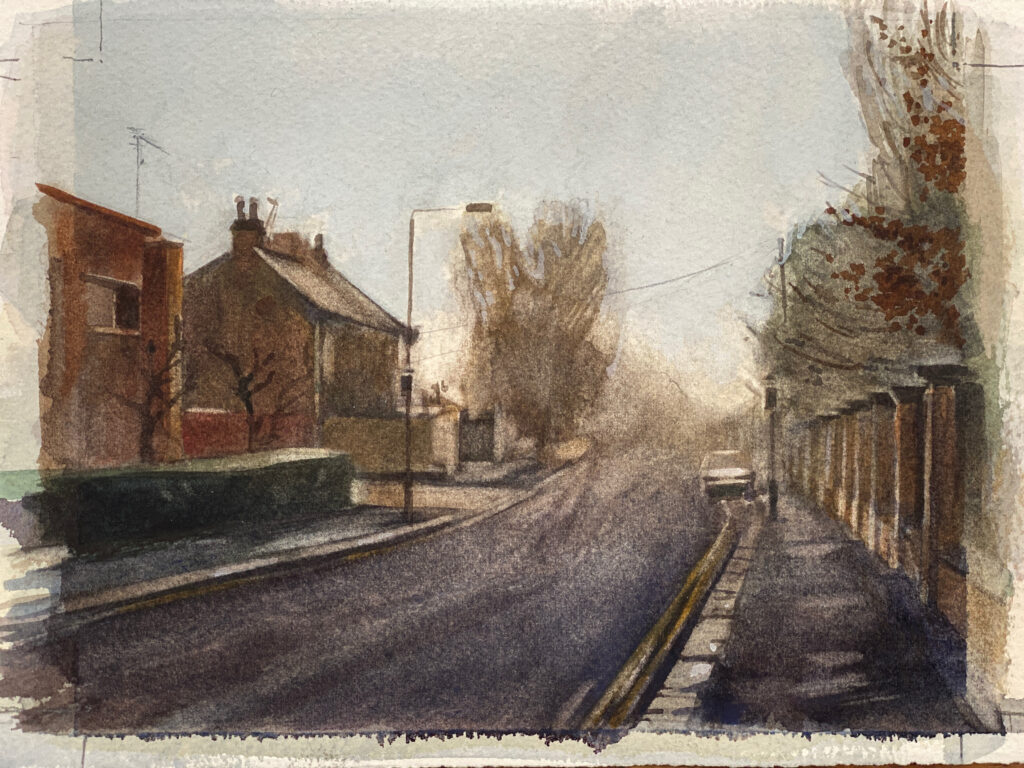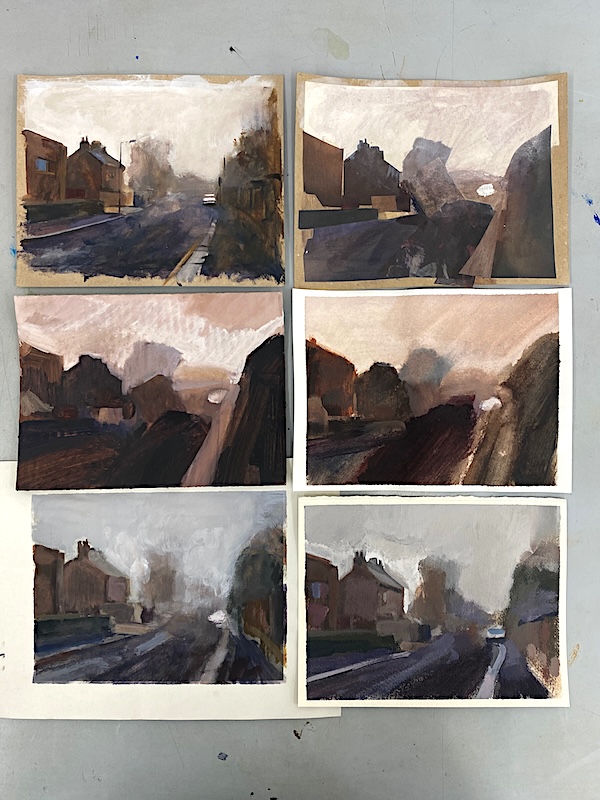
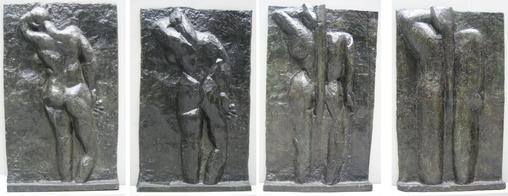

The three groups of work above, by Picasso, Matisse and Mondrian, show how each artist made a representational depiction of a subject, then edited it through a number of stages towards abstraction. In the case of both Picasso’s bull and Matisse’s backs, the first stage; a stone lithograph print and a plaster relief sculpture, were used as the starting point for removing detail, whilst retaining the essence of the original form. Mondrian’s paintings on the other hand were made over a series of years, reducing a painting of a tree towards vertical and horizontal lines, and geometric spaces. In Matisse’s lifetime, the backs were only produced in plaster, however, after his death they were cast in Bronze. Quiz questions: How much did Matisse’s Back IV sell for at Christies in 2010? (Answer).
In 2024 I used the above information as a starting point for lessons with both adults and children on the theme of ‘Abstracting’. The aim for both sessions was to repeatedly repoduce paintings, editing until the subject was barely recognisable anymore. Adults started with a representational painting they had made in the past and children started by choosing an artist’s postcard. To encourage abstraction, we reduced the amount of time used for a drawing (down to 20 seconds), worked with a brush that felt too big for the image, and produced fast collages; all great ways to force ourselves to edit a subject and remove detail. Removing control from our process often brings exciting results.
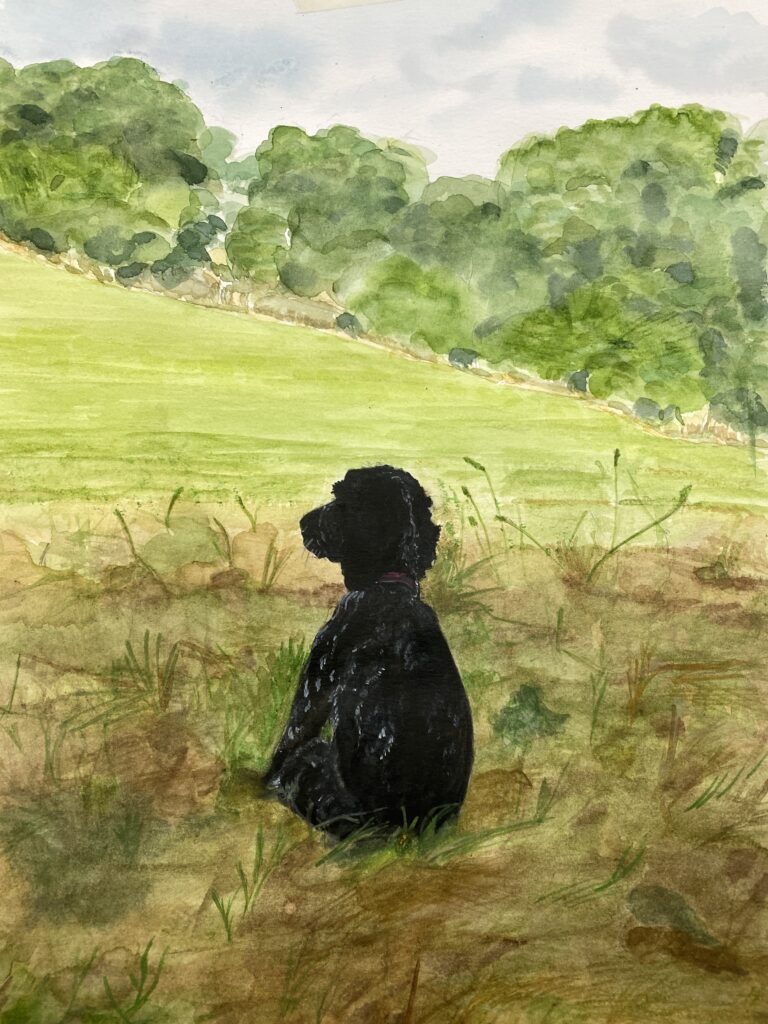
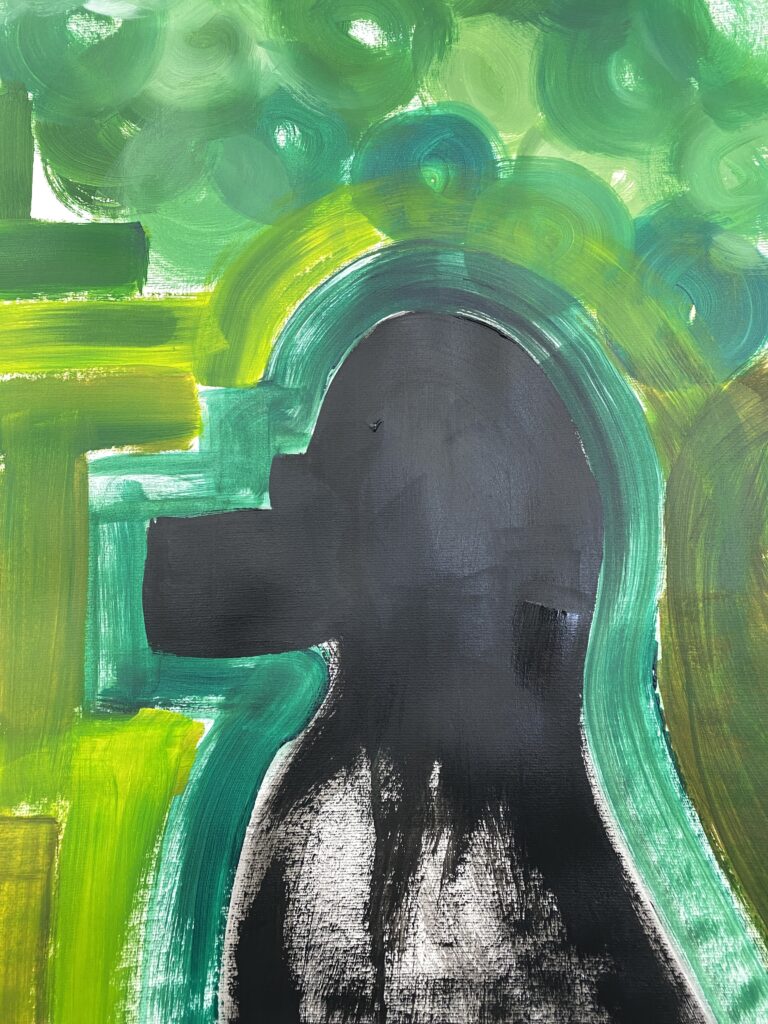
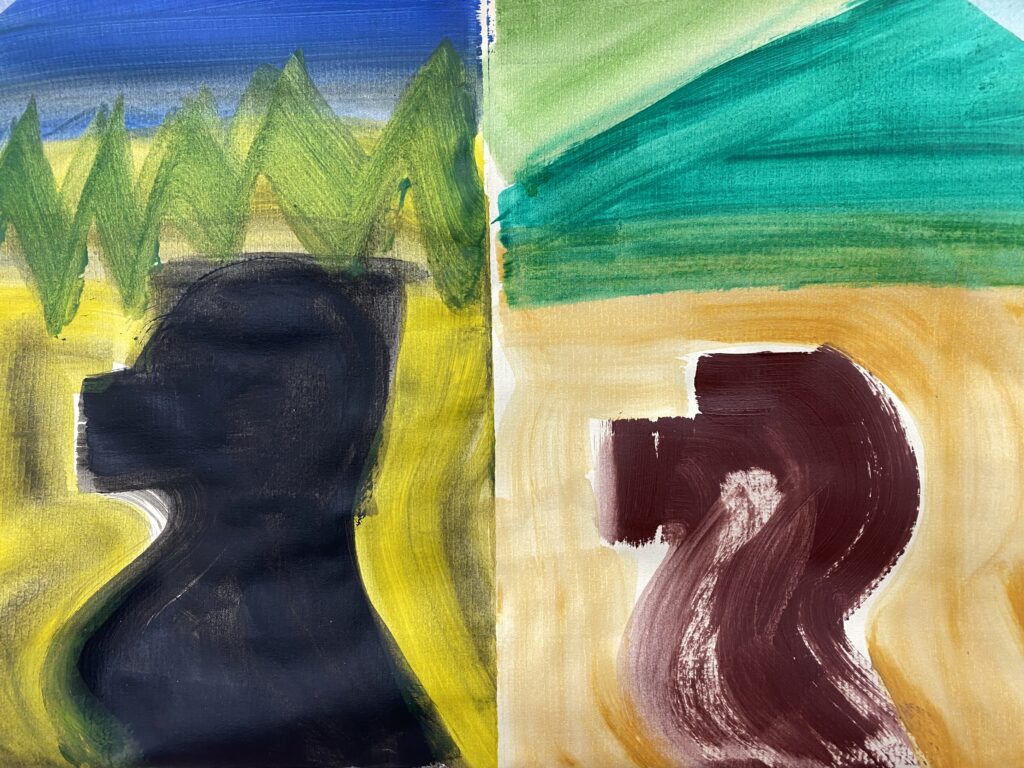
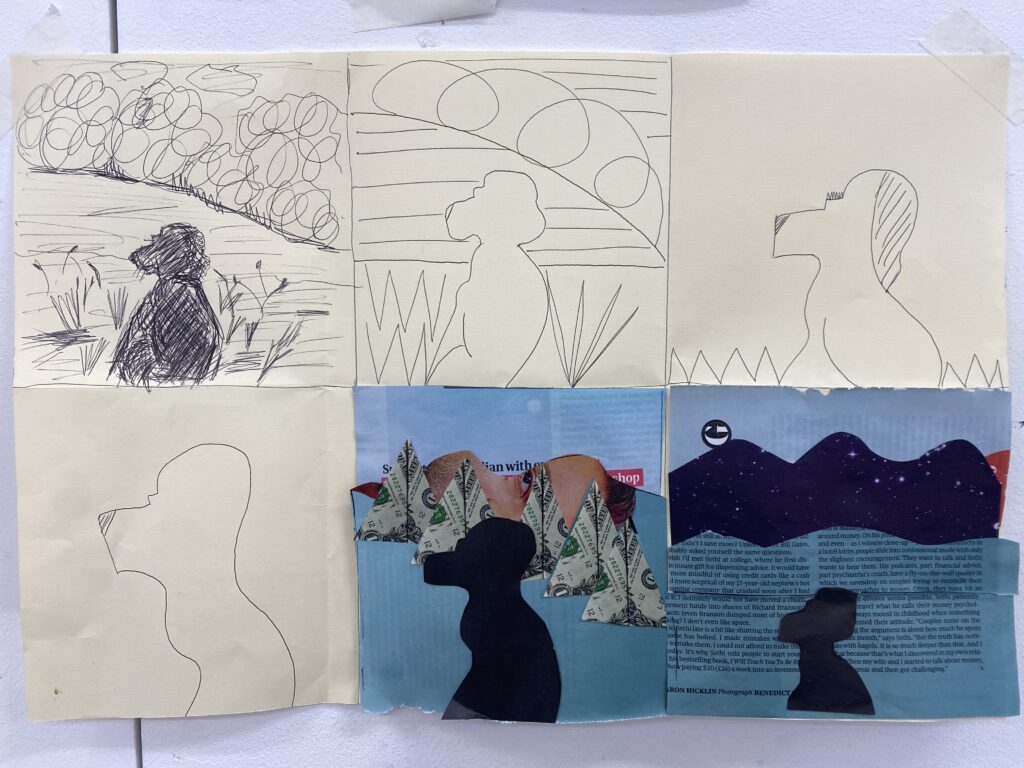
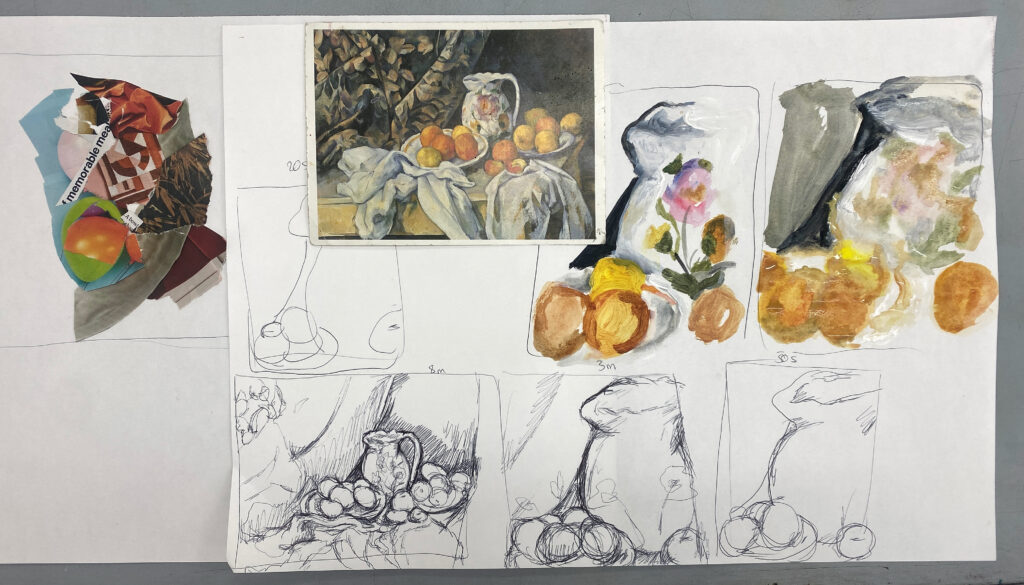
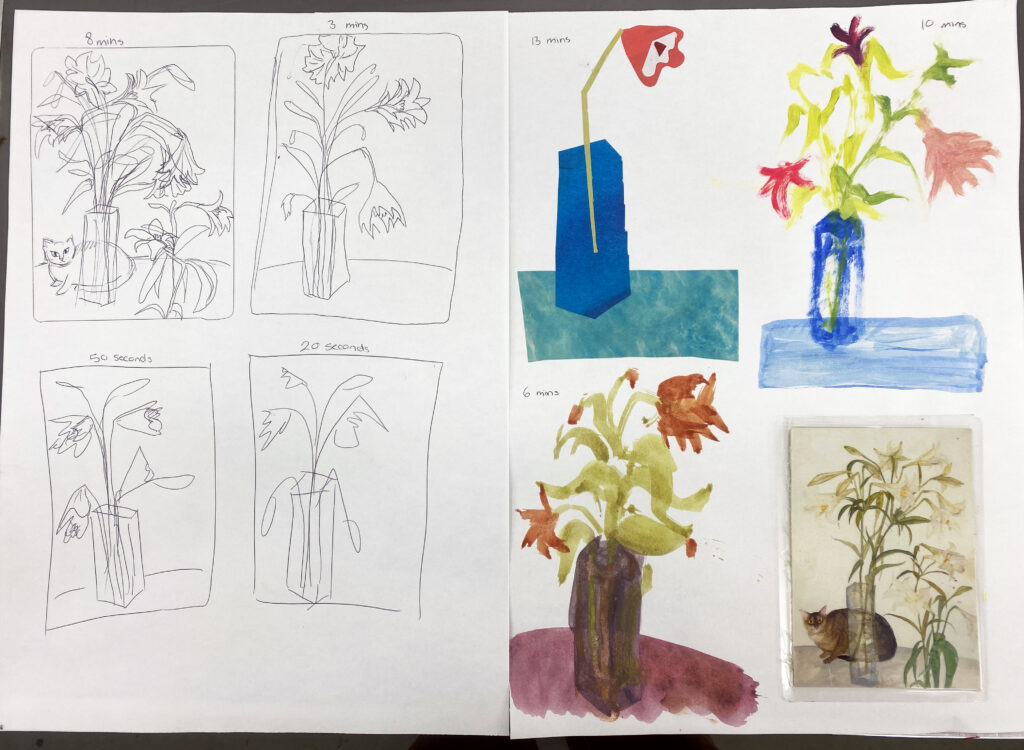
Since the above post, I have followed the same process myself, abstracting a watercolour painting I had previously made.
